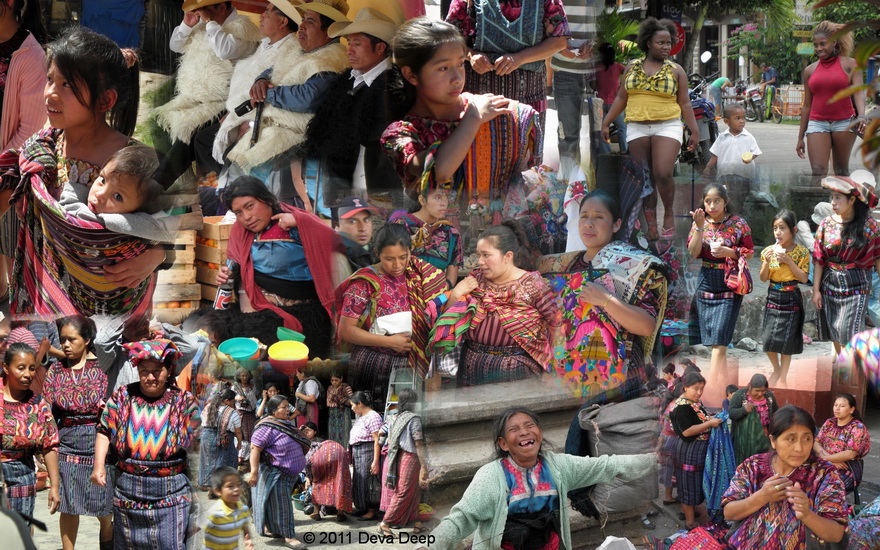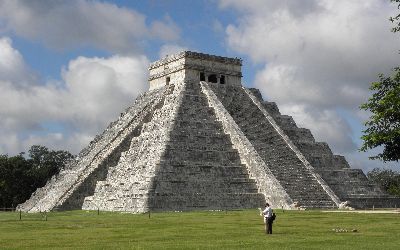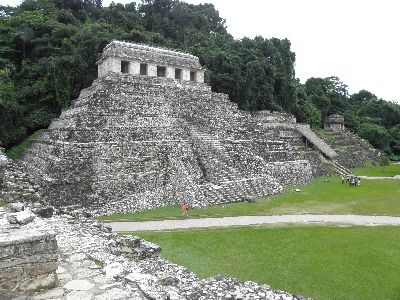Central America - MAYA route photos
|
 |
This Central America trip
visits Mexico, Guatemala and Honduras.
<--- Click on the little
map to see the whole route. |
Natural beauty
These countries are rich in nature: beautiful tropical
jungles with all kind of wildlife. Hidden in some jungles are magnificent Maya
ruins. There are also amazing lakes with volcano's like Lake Atitlan, rivers
like the Rio Dulce and majestic waterfalls like Agua Azul and Misol Ha. And not
to forget fine beaches with an azure-blue sea and coral riffs.
This collage gives an impression of all this natural beauty.
You can click on it to see it enlarged. In the slideshow below you can see many more photos.

Enlarge
Old
colonial cities
There are several old colonial cities in Mexico and
Guatemala, great places to dwell through the old streets and marvel at the
splendid churches and other old buildings. The central plaza is mostly very
lively with music and restaurants around. Especially in the evening and night
you will feel enchanted by the relaxed atmosphere.
My favourite cities are Campeche, San Cristobal and Antigua.

Enlarge
The colourful Indian and Mayan people
Last but non least the colourful Indian and Mayan people. The
today's Mayas have an peculiar blend of Christian beliefs and their old
traditions. Like ritual slaughter of chickens in their church, sometimes filled
with strange saints and their own folk saint Maximon.
Highlights for me were San Juan and Chichicastenango with
their alluring markets..
Again this collage gives a colourful impression and you can
see in the 183 photos the whole journey.

Enlarge
The Mayas
The Maya is a Mesoamerican civilization, noted for the only
known fully developed written language of the pre-Columbian Americas, as well as
for its art, architecture, and mathematical and astronomical systems. Initially
established during the Pre-Classic period (c. 2000 BC to 250 AD), according to
the Mesoamerican chronology, many Maya cities reached their highest state of
development during the Classic period (c. 250 to 900 AD), and continued
throughout the Post-Classic period until the arrival of the Spanish.
The Maya civilization shares many features with other
Mesoamerican civilizations due to the high degree of interaction and cultural
diffusion that characterized the region. Advances
such as writing, epigraphy, and the calendar did not originate with the Maya;
however, their civilization fully developed them. Maya influence
can be detected from Honduras, Guatemala, Northern El Salvador and to as far as
central Mexico, more than 1,000 km (620 mi) from the Maya area. Many outside
influences are found in Maya art and architecture, which are thought to result
from trade and cultural exchange rather than direct external conquest.
The Maya peoples never disappeared, neither at the time of
the Classic period decline nor with the arrival of the Spanish conquistadores
and the subsequent Spanish colonization of the Americas. Today, the Maya and
their descendants form sizable populations throughout the Maya area and maintain
a distinctive set of traditions and beliefs that are the
result of the merger of pre-Columbian and post-Conquest ideas and cultures.
|

Press F11 to see the full screen.
In the slideshow window you can start or stop the
slideshow with the space bar.
You can also use the arrow keys <- -> (on your keyboard or screen)
or the mouse wheel for step by step viewing.
Name of the photo is left of the picture. |

The Mayas - Sacred Sites
Maya architecture spans many thousands of years; yet, often
the most dramatic and easily recognizable as Maya are the stepped pyramids from
the Terminal Pre-classic period and beyond.
It has been suggested that temples and
pyramids were remodeled and rebuilt by a new ruler or for political
matters. However, the process of rebuilding on top of old structures is indeed a
common one. Most notably, the North Acropolis at Tikal seems to be the sum total
of 1,500 years of architectural modifications.

Enlarge
Chichen Itza
 Chichen
was a large pre-Columbian city built by the Maya civilization. The
archaeological site is located in the Mexican state of Yucatán. Chichen
was a large pre-Columbian city built by the Maya civilization. The
archaeological site is located in the Mexican state of Yucatán.
Chichen Itza was a major focal point in the northern Maya
lowlands from the Late Classic (c.600–900 AD) through the Terminal Classic
(c.800–900) and into the early portion of the Early Postclassic period
(c.900–1200). The site exhibits a multitude of architectural styles, reminiscent
of styles seen in central Mexico and of the Puuc and Chenes styles of the
northern Maya lowlands
Chichen Itza was one of the largest Maya cities and it was
likely to have been one of the mythical great cities,
or Tollans, referred to in later Mesoamerican literature. The city may have had
the most diverse population in the Maya world, a factor that could have
contributed to the variety of architectural styles at the site.
Uxmal
|
 |
Uxmal is a large
pre-Columbian ruined city of the Maya civilization in the state of
Yucatán, Mexico. It is 78 km south of Mérida. Uxmal holds some of
the most complex and beautiful examples of the regional Puuc-style
architecture, and its magnificent pyramids and structures make it a
popular tourist destination. |
Palenque
 Palenque
was a Maya city state in southern Mexico that flourished in the 7th century. The
Palenque ruins date back to 100 BC to its fall around 800 AD. After its decline
it was absorbed into the jungle, , but has been excavated and restored and is
now a famous archaeological site attracting thousands of visitors. Palenque
was a Maya city state in southern Mexico that flourished in the 7th century. The
Palenque ruins date back to 100 BC to its fall around 800 AD. After its decline
it was absorbed into the jungle, , but has been excavated and restored and is
now a famous archaeological site attracting thousands of visitors.
Palenque is a medium-sized site, much smaller than such huge
sites as Tikal or Copán, but it contains some of the finest architecture,
sculpture, roof comb and bas-relief carvings that the Mayas produced. Much of
the history of Palenque has been reconstructed from reading the hieroglyphic
inscriptions on the many monuments. The most famous ruler of Palenque was Pacal
the Great whose tomb has been found and excavated in the Temple of the
Inscriptions.
By 2005, the discovered area covered up to 2.5 km² (1 sq mi),
but it is estimated that less than 10% of the total area of the city is
explored, leaving more than a thousand structures still covered by jungle.
Copán

 |
Copán is an
archaeological site of the Maya civilization located in western
Honduras, not far from the border with Guatemala. It was the capital
city of a major Classic period kingdom from the 5th to 9th centuries
AD. Copán was occupied for more than two
thousand years, from the Early Preclassic period right
through to the Postclassic. The city developed a distinctive
sculptural style within the tradition of the lowland Maya, perhaps
to emphasize the Maya ethnicity of the city's rulers. |
Tikal
|
 |
Tikal is one of the largest archaeological sites
and urban centers of the pre-Columbian Maya civilization. It is
located in what is now northern Guatemala.
Tikal was the capital of a conquest state that
became one of the most powerful kingdoms of the ancient Maya. Though
monumental architecture at the site dates back as far as the 4th
century BC, Tikal reached its apogee during the Classic Period, ca.
200 to 900 AD. During this time, the city dominated much of the Maya
region politically, economically, and militarily, while interacting
with areas throughout Mesoamerica such as the great metropolis of
Teotihuacan in the distant Valley of Mexico. |
|
Visiting the
sacred Maya sites on very special dates revealed much of the real
prophesies for this special time, but also show the principle of
synchro-destiny: to be in tune (in synchronicity) with your destiny.
It opens the possibilities for a wonderful life. |
|

Press F11 to see the full screen.
In the slideshow window you can start or stop the
slideshow with the space bar.
You can also use the arrow keys <- -> (on your keyboard or screen)
or the mouse wheel for step by step viewing.
Name of the photo is left of the picture. |

|